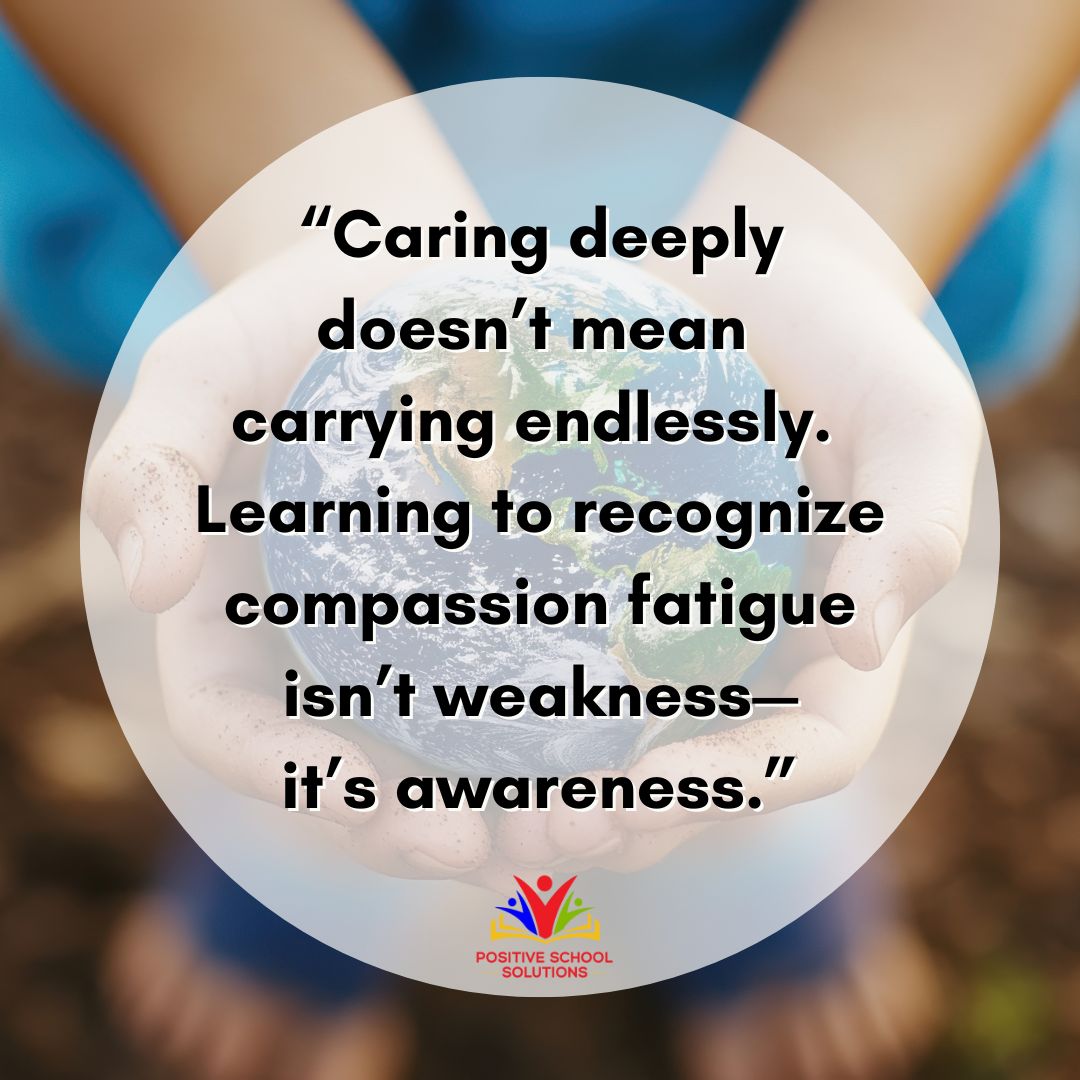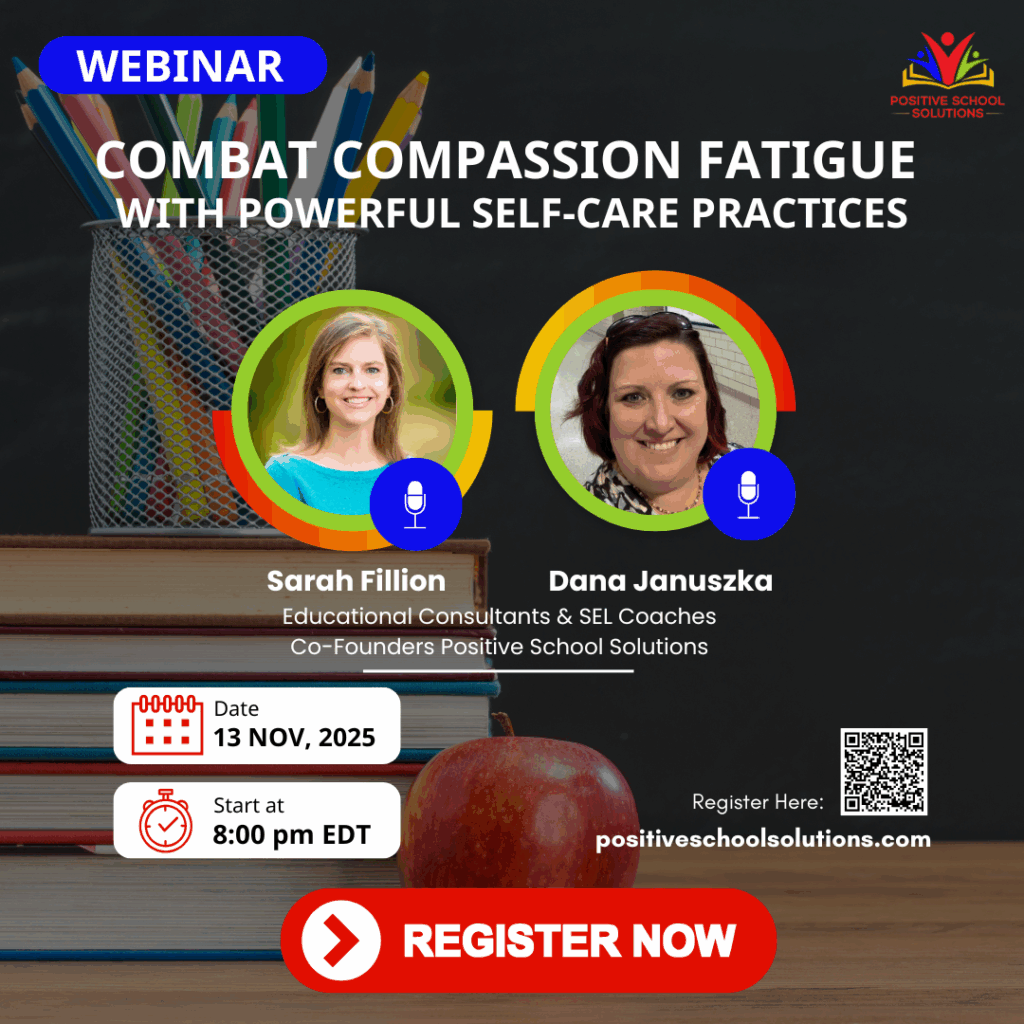I’ll never forget the morning Ryan walked into my fifth-grade classroom and told me he had an emergency share.
When it was his turn during our morning meeting, he stood up and said, “My dad’s getting out of jail today.”
The room fell silent for a moment. Then the questions started.
“Are you going to see him?”
“What’s the first thing you’ll do together?”
“Are you excited?”
And then, Stephanie quietly asked: “Are you scared?”
Ryan shrugged. “I don’t know,” he said quietly, eyes fixed on the rug.
Later that day, once everyone else was on their way to recess, he stopped by my desk.
“I am kind of nervous,” he said. “I don’t really know what it’s going to be like when he comes home.”
That night, I couldn’t stop thinking about him.
Was he safe?
Was his dad really home?
Would he come to school tomorrow?
I tossed and turned, replaying our conversation, worrying about things I couldn’t control. And that—right there—is what compassion fatigue looks like.
It’s not dramatic. It’s quiet. It’s what happens when our hearts hold more than they were ever meant to carry alone.

What Is Compassion Fatigue?
Compassion fatigue isn’t the same as burnout, though they often travel together.
Burnout happens when the demands of the job feel never-ending.
Compassion fatigue happens when the emotions of the job feel too heavy to hold.
It’s what sets in when your empathy meter runs low because you’ve been absorbing students’ stories of pain, instability, loss, or trauma—sometimes without realizing it. Over time, that constant exposure can leave you emotionally drained, detached, or even guilty for needing space from the very people you care most about.
Researcher Charles Figley, who coined the term compassion fatigue, described it as “the cost of caring.” Teachers are particularly vulnerable because our work is built on connection. We notice the quiet tears at dismissal, the student who suddenly stops turning in homework, the one who starts acting out because life outside school feels unpredictable.
We don’t clock out at 3:00 p.m.—our minds replay conversations long after the final bell.
And while that deep empathy is one of our greatest strengths, it’s also what leaves so many educators lying awake at night, worrying about the kids they can’t stop thinking about.
But the truth is – caring deeply doesn’t mean carrying endlessly. Learning to recognize compassion fatigue isn’t weakness—it’s awareness. It’s the first step toward protecting your own well-being so you can keep showing up with love, presence, and purpose.
One Small Step to Lighten the Load: The “Release Ritual”
Here’s one simple, research-backed way to start easing compassion fatigue—something you can do in less than five minutes at the end of your school day:
Before you leave for the day, take a few moments to consciously let go of the emotional weight you’ve been carrying. This small act—done consistently—signals to your brain and body that your workday is complete and it’s safe to rest.
Try a “Release Ritual.”
You can do this in a way that feels natural to you:
- Write down the names of the students who are heavy on your heart, say a brief hope or intention for them, and then close the notebook.
- Stand by your classroom door, take a deep breath, and say (silently or aloud): “I’ve done what I can for today. The rest is not mine to hold tonight.”
- Play a specific song as your “leaving cue”—a signal to your brain that school energy stays at school.
These simple actions aren’t just symbolic—they’re neurological resets. When we experience stress or empathy overload, our nervous systems stay activated, keeping us in a subtle fight-or-flight state. Intentional rituals, even short ones, help retrain your brain to recognize when to power down.
Research in behavioral psychology also shows that habit cues—like music, repeated phrases, or physical gestures—help anchor routines and reduce emotional carryover. In other words, when you do something consistent each afternoon to close your day, your mind learns: “This is when I release what I can’t control.”
Over time, this small daily boundary helps you carry compassion without depletion. You still care deeply—but you’re also caring wisely.
Teaching is heart work.
But even hearts need boundaries to stay strong.
When we build small moments of release into our routines, we honor both our students’ stories and our own humanity.
Written by Sarah Fillion 2025

